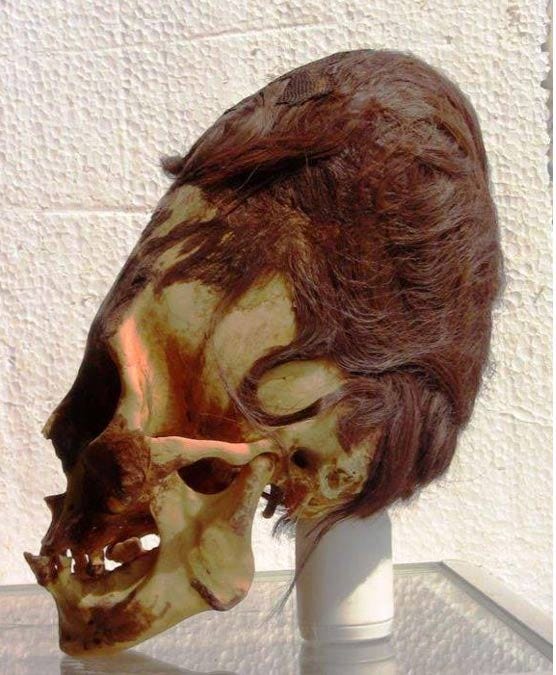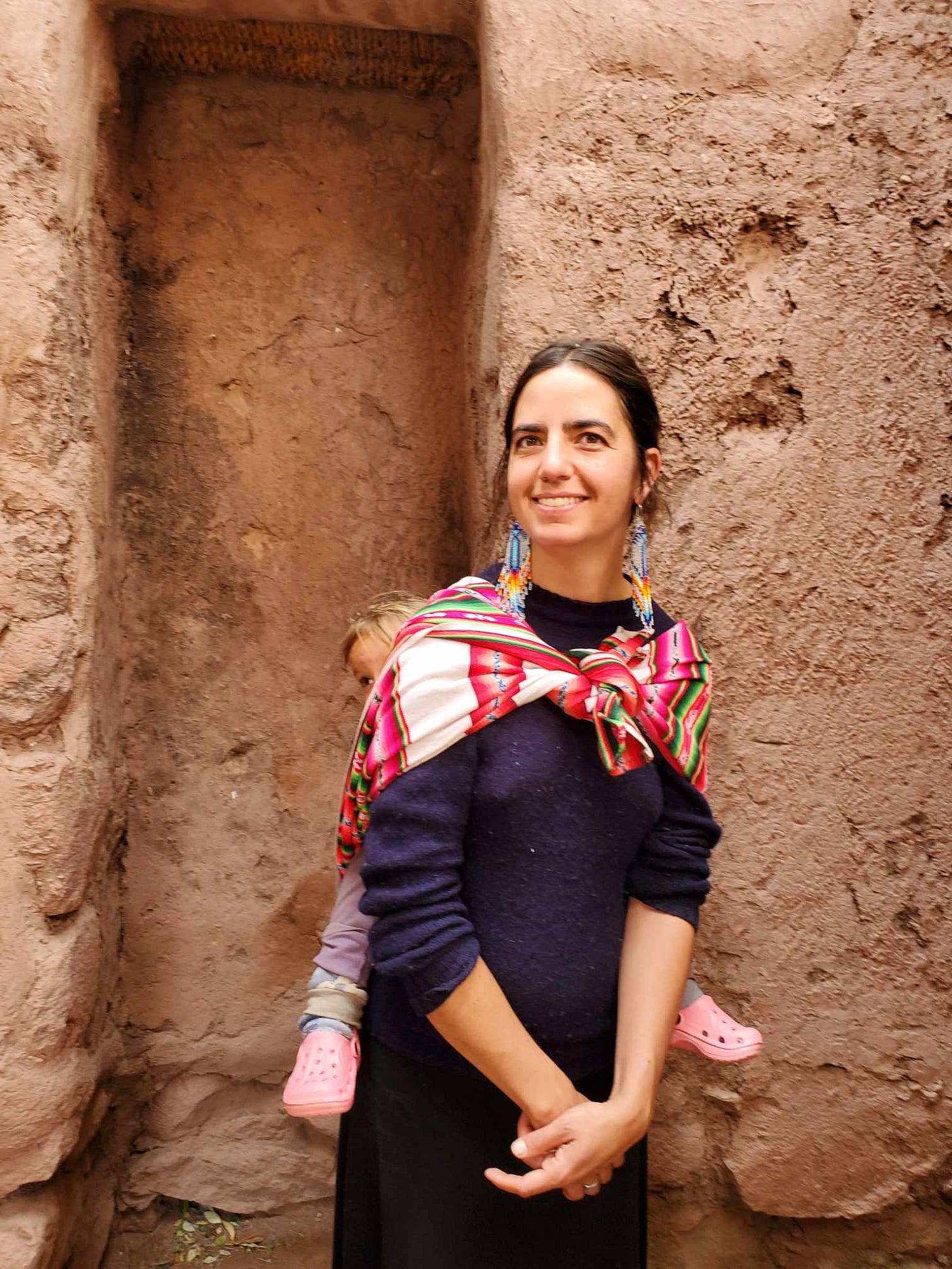
In a previous post, entitled Pachamama Altar, I wrote about the essential nature of the feminine as it relates to Life, sacred sites and reclamation of self. I compared my own return to self as a return to the ancient, sacred stones that existed before churches and mosques and holy houses of all kinds were built over them... Little did I know that those ancient stones would start talking to me.
The idea of sacred sites, as naturally occurring magnetic and energetic portals across the planet, areas that have drawn civilizations for thousands of years to return, again and again, kept pulling at my consciousness: the primary feminine, the energetic and magnetic signature of power, sites that have been continuously built upon and revered by generation after generation.
Then I stumbled across the gorgeous book, Sophia Sutras: Introducing Mother Wisdom by Carol E. Parrish-Harra, where the author explains the feminine origin of wisdom traditions across the globe, again the primacy of the feminine, especially as it relates to spiritual revelation and ancient mystery traditions.
She who dwells within1, is always present just as is the air we breathe, and she is just as difficult to explain. Whether called Sophia, Wisdom, the Divine Feminine (to list only three of her many names) — regardless of heritage, history or culture — the archetypal matriarchal force, moves unrestricted through all traditions, ever resistant to limitations and human preferences.
She who dwells within, also known as Shekina. In the traditions of Judaism and Kabalah, the divine feminine that awaits within to activate expressions of wisdom, inner knowing, and protection: a source of grace and blessings, the bearer of divine creativity, the luminous presence of God.
This deeper path of feminine wisdom began to reveal itself to me: the spaciousness, the mystery, the divine revelation; the Mother Wisdom of Sophia, the humble access points of deep inner knowing, the practice required, the refinement, the guidance of subconscious symbols, archetypes, and visions, the spiritual longing, the life of service, the normalcy of feminine mysticism. The origin. The deep earth.
So, through the pairing of meditation, curiosity and attuning to, what Carol Parrish-Harra calls, The Cloud of Knowable Things, I sat on my jungle panther pillow, closed my eyes, and entered into practice.
You may be wondering, what does any of this have to do with the 2,000 year old, red headed elongated skull found on the coast of Peru?
Well, it’s a story that begins with the name of my daughter, Amara.
When we first arrived in Cuzco, we met a Peruvian artist who specialized in woodwork of esoteric significance. At the moment of meeting, he was working on these, maybe six foot tall, carvings of monkey guardians that looked much more like aliens then monkeys, commissioned by a friend who had a retreat center nearby. We got to talking and he was very interested in sharing unusual and unreported histories and stories of this part of the world. When we told him our daughter’s name, he lit up and shared with us: “There was a pre-Incan civilization here in Peru, a long time ago, called the Amaraka. The name means ‘the immortals.’”
Very, very interestingly, the name Amara in Sanskrit, the ancient language of India, also means immortal, or undying.
Quick note on the ancient Sanskrit language: “The Sanskrit language was termed as Deva-Vani ('Deva' Gods - 'Vani' language) as it was believed to have been generated by the god Brahma who passed it to the Rishis (sages) living in celestial abodes, who then communicated the same to their earthly disciples from where it spread on earth.”
Of course I dove into online research to find out more about the Amaraka, and found essentially, nothing.
Until, from the quiet candle-lit sanctuary of my meditation room, I was shown the mountains of Urubamba.
When we arrived in Urubamba, an enormous wedding procession was taking place. “Mystical,” Scott called it, as the flocks of pigeons diving for the multi-colored confetti on the stone steps of the Catholic church created air-born waves of wings and flying paper confetti.
We walked to the Palacio de Huayna Capac, near the cemetery, noting the handfuls of coca leaf offerings left in the doorways to the palace. We spoke with the guides there, learned about Huacas (W’akas), “sacred places or objects, often related to nature (rocks, hills, springs, etc.) or to human construction…which were considered centers of spiritual or cultural power by the Andean peoples. The Chronicler, Bernabe Cobo, described 328 w’akas connected by 41 imaginary lines that have their origin in the temple of the Sun (Qorikancha).” We found a tourist pamphlet. We carried on. (More on Qorikancha in Part 2).
Back home, I was briefing through the Urubamba pamphlet, when I saw, in all capital bold letters, the word AMARAKA.
Translated from Spanish, the few paragraphs before and after read:
The beautiful mountains of the Andes have always been the origin and seat of a very special energy that our ancestors knew how to properly take advantage of it for their psychophysical and spiritual growth, which undoubtedly resulted in a state of permanent harmony that led to the happiness of the peoples of this Amaraka (the true name of America that does not come from the name of the Italian Amerigo Vespucci but rather from another very ancient Caribbean language that means "land of immortals").
Our Andean ancestors were certain that Inti (God), the true Inti (who is behind the physical Inti-sun, also the giver of life, one of its smallest manifestations), created the Runacunas (humans). When they discovered this truth and wisely declared the following: "We are rays of the one sun." Therefore, all humans are brothers and sisters, beyond the color of our skin and the place where we were born, we are united by our divine origin.
When the Spanish invasion of AMARAKA occurred some 500 years ago, foreigners arrived and misinterpreted this worldview, literally believing they were worshiping the physical sun, a gross error that allowed it to override the very brotherly understanding they brought with them about the origin of things, evolution, life, humanity, God, etc., etc.
The man of "the land of the immortals" built, in the magnetic and mysterious valley of the Incas, the architectural jewels, admiration of the world, that allowed the scientific knowledge of the universe, the management of its laws, the study of the cosmic influence in their lives and in nature as a whole, the control of the elements, the respect of the Pacha mama as a living being, the metaphysical knowledge of physical life, etc. Known as sacred and energetic places in this beloved Urubamba: Machu Picchu, Ollantaytambo, Chinchero, Maras, which as we said were and are places dedicated to great and special ceremonies, whose rituals are still preserved in all their authenticity, as symbols that today are also universal, permanently reminding us: What we are! What is our origin! Why do we come! Where are we from! What for! as human values that are still valid and have not lost their relevance despite the passage of time, and that today's man, we are sure, needs to know and practice urgently in order to live happily and in harmony with himself, avoiding the tensions, characteristic of this era, that do not allow him to live in peace, to which he has every right.
As I researched deeper into the old and mysterious history of Cuzco and the Sacred Valley of the Incas, I came across the profound, prolific and mind-bending work of researcher and megalithic authority, Brian Foerster. After watching dozens of his videos, I found my meditations began heightening with a kind of feminine wisdom, visions from another world. The discoveries of his work will be presented in Part Two of this Deep Feminine series, as they spiral together ancient mystery technologies, elongated skulls and possible seed-civilizations.
Until then, an homage to Amara, Eternity and the path of the feminine.
From interdisciplinary artist and educator, Koyoltzintli, the above video:
Amaraka, The Eternal Tales.
Based on a compilation of animistic cosmology, the Old Memory chant woman, dreams the world [of the Americas] as liberated and in peace.
The text is narrated in Zápara, an endangered language from the Zápara nation in the Ecuadorian rainforest, This piece is in response to our relation to the land, the need for resistance, and the importance of dream as a political incantatory act.
Chapters:
Old Memory chant woman descends
Put Honey in his feet
Mud woman dances
She, who takes off her mud/skin and creates life
AMARAKA, THE ETERNAL TALES
Nuka yakawiria nau nukati mukushinia
Muy arriba en la corteza de los arboles,
Very high in the canopy of some trees,
Nau wikaja akanuja aka aki mapa tsawanu
Las hojas entrecruzadas crean un mapa en su sombra
The branches that traverse create a map in their shadow
Nau rapaka ikicha ikiumu
La tierra esta humeda
The land is moist
Kika esmeralda, Kika iyauna
Verde esmeralda, verde wayusa,
Green Esmerald, green bitter leaf
Naruka kuyajaka
Piedras huacas guardianes
Guardian stones
Chatim nakuna ati nau irishipijaunu
Cada planta/ser tiene su historia
Each plant/being has their story
Omeede
Ta richunu nau ninakari.
Se espera la noche
They wait for the night
Iya katsaka kawiria nau katsaka ikicha iwana yanukua
Dejando que todo lo que esta bajo el sol
Letting everything that is under the sun
Ataunjuka
Descanse
Rest
Niatu nau Jumandi
Hija de Jumandi
Daugther of Jumandi
Nau paratu atinu, nau mukushi Piatsaw nakuna atinu
El viento le habla, el palo santo prendido le habla
The wind speaks, the heartwood ignited, speaks
Pakatetaka tsamarujinia
Prende al alma dice
Ignite the soul, it says
Charatu ta tsamaraw Tomadora de espíritu
Imbiber of the soul
Nau naku ta ku ikicha, nuka katsaka nau nashini ta
La selva te llama, para que la cuides
The forest calls, to care for her
Ikicha kuiñu pirinu
Estos hermanos menores
These younger brothers
Saninu ta iki nukiriu
Confundidos en su espejo
Confused in their reflection
Taikua aniki nukisha
No saben ver
They do not know how to see
Nau imatiña ta ikinu
El jaguar le pregunta:
The jaguar asks:
Nau pajinu ikicha ku tsamaraw
A donde esta tu alma?
Where is your soul?
Tsururuku irishipiukanu
Contando historias,
Telling stories
Ataujuka anaka icha nau aramaja
Haciéndonos recordar a través de la piel.
Reminding us through her skin
Katsaka tausi nujinia anaka, ta,
Que somos hechos de memorias,
That we are made of memories,
Ta muricha, nukiti, rapaka, naka ta anamishuka.
De agua, aceite, tierra, sangre y sal.
Of water, oil, mud, blood and salt.
-Excerpt from Old Memory Woman Chants,
Amaraka the eternal tales
Koyoltzintli Miranda Rivadeneira
Zápara translation by Shimanu Ushigua, defensor de la selva
✧ ✧ ✧ ✧ ✧ ✧
Thank you for reading this edition of Wild Leaf. May it be of benefit to you and yours. If you like what you read, please consider becoming a paid subscriber. To support, you can always, Buy Me A Coffee.
Much love,
Leah
Fun aside: as Scott was proofreading this post, I was showing Amara how we can fold paper up many times, make a bunch of little cuts and open it up to make a snowflake. I was snipping away, listening to him reading my writing, checking for errors, and when we opened the paper back up, we saw that I had created two rows of mirroring skulls.






Mesmerized by it all, the patterns, the synchronicities